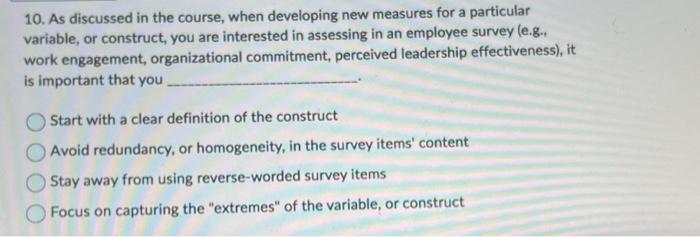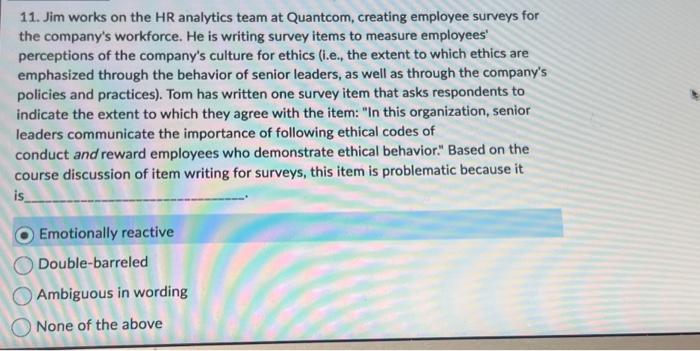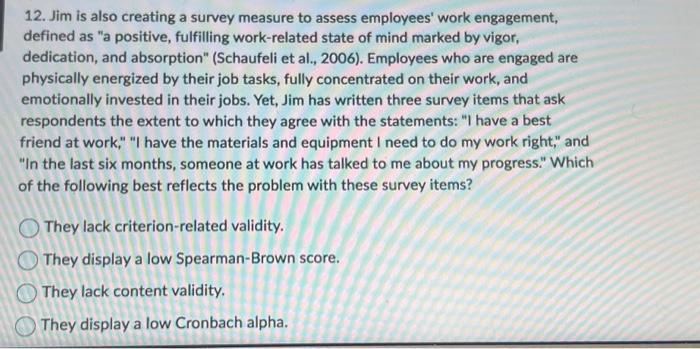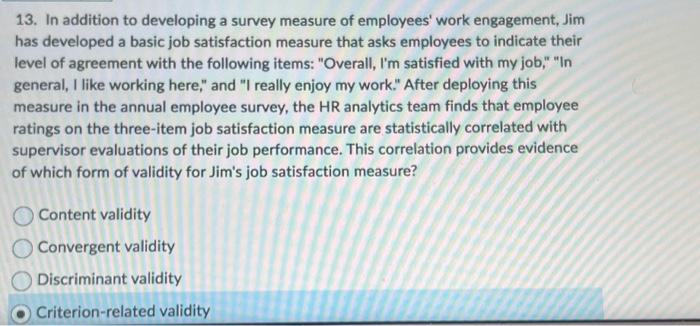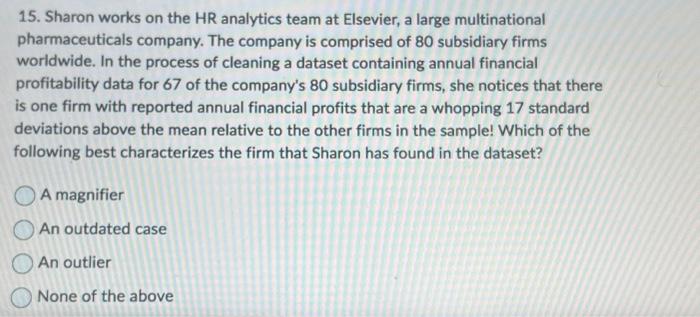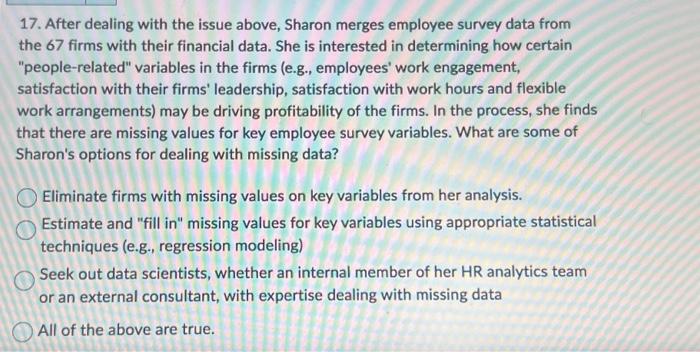10. As discussed in the course, when developing new measures for a particular variable, or construct, you are interested in assessing in an employee survey (e.g., work engagement, organizational commitment, perceived leadership effectiveness), it is important that you Start with a clear definition of the construct Avoid redundancy, or homogeneity, in the survey items' content Stay away from using reverse-worded survey items Focus on capturing the "extremes" of the variable, or construct 11. Jim works on the HR analytics team at Quantcom, creating employee surveys for the company's workforce. He is writing survey items to measure employees' perceptions of the company's culture for ethics (i.e., the extent to which ethics are emphasized through the behavior of senior leaders, as well as through the company's policies and practices). Tom has written one survey item that asks respondents to indicate the extent to which they agree with the item: "In this organization, senior leaders communicate the importance of following ethical codes of conduct and reward employees who demonstrate ethical behavior." Based on the course discussion of item writing for surveys, this item is problematic because it is Emotionally reactive Double-barreled Ambiguous in wording None of the above 12. Jim is also creating a survey measure to assess employees' work engagement, defined as "a positive, fulfilling work-related state of mind marked by vigor, dedication, and absorption" (Schaufeli et al., 2006). Employees who are engaged are physically energized by their job tasks, fully concentrated on their work, and emotionally invested in their jobs. Yet, Jim has written three survey items that ask respondents the extent to which they agree with the statements: "I have a best friend at work," "I have the materials and equipment I need to do my work right," and "In the last six months, someone at work has talked to me about my progress." Which of the following best reflects the problem with these survey items? They lack criterion-related validity. They display a low Spearman-Brown score. They lack content validity. They display a low Cronbach alpha. 13. In addition to developing a survey measure of employees' work engagement, Jim has developed a basic job satisfaction measure that asks employees to indicate their level of agreement with the following items: "Overall, I'm satisfied with my job," "In general, I like working here," and "I really enjoy my work." After deploying this measure in the annual employee survey, the HR analytics team finds that employee ratings on the three-item job satisfaction measure are statistically correlated with supervisor evaluations of their job performance. This correlation provides evidence of which form of validity for Jim's job satisfaction measure? Content validity Convergent validity Discriminant validity Criterion-related validity 14. In the course, you learned about the importance of "knowing your data." Which of the following is NOT true with respect to knowing your data? Examining the quality of your data is vital to an HR analytics project. Data used in any HR analytics project are never perfectly clean and complete. Most statistical mistakes involve sound statistical analysis performed on biased or uncleaned data (i.e., "Garbage in, garbage out"). No matter how low the quality of your data is, there is always a technique that can be used to make your data analyzable. 15. Sharon works on the HR analytics team at Elsevier, a large multinational pharmaceuticals company. The company is comprised of 80 subsidiary firms worldwide. In the process of cleaning a dataset containing annual financial profitability data for 67 of the company's 80 subsidiary firms, she notices that there is one firm with reported annual financial profits that are a whopping 17 standard deviations above the mean relative to the other firms in the sample! Which of the following best characterizes the firm that Sharon has found in the dataset? A magnifier An outdated case An outlier None of the above 16. Given the scenario above, which of the following represents the best strategy for Sharon to initially adopt in order to try and understand this firm's unusually high profits? Conduct a regression analysis Examine the firm's f-distribution Consult with the data owners in finance Initiate a new data collection 17. After dealing with the issue above, Sharon merges employee survey data from the 67 firms with their financial data. She is interested in determining how certain "people-related" variables in the firms (e.g., employees' work engagement, satisfaction with their firms' leadership, satisfaction with work hours and flexible work arrangements) may be driving profitability of the firms. In the process, she finds that there are missing values for key employee survey variables. What are some of Sharon's options for dealing with missing data? Eliminate firms with missing values on key variables from her analysis. Estimate and "fill in" missing values for key variables using appropriate statistical techniques (e.g., regression modeling) Seek out data scientists, whether an internal member of her HR analytics team or an external consultant, with expertise dealing with missing data All of the above are true
